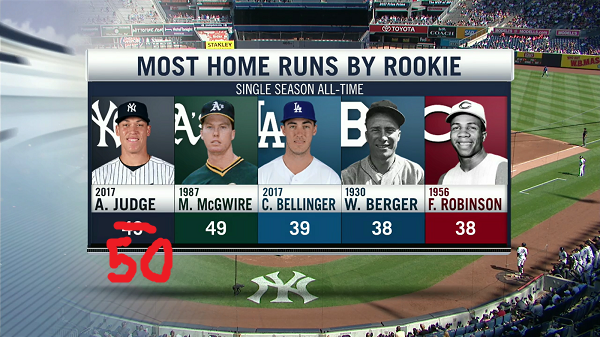How the Twins Can Beat the Yankees Tonight
Tonight, the postseason kicks off with the Yankees hosting the Twins in the AL Wild Card game. And there may not be another game this year where one team is as strongly favored to win as New York is today. Our Game Odds have the Yankees as 67/33 favorites, FiveThirtyEight has it 63/37 for the Yankees, and depending on the sports book you’re looking at, the Yankees might be as high as 70% favorites to win tonight.
It’s not too hard to see why the odds are so slanted in New York’s favor. For one, they’re pretty clearly the better team. Their 91-71 record might only be six games better than Minnesota’s, but their BaseRuns expected record of 102-60 was actually the second-best in baseball, and 21 wins better than the Twins 81-81 expected record.
And the advantage is only amplified by eliminating the depth pieces in a winner-take-all affair. Luis Severino (2.98 ERA/3.07 FIP/3.04 xFIP) is a significantly better pitcher than Ervin Santana (3.28 ERA/4.46 FIP/4.77 xFIP), and the gap will only grow once the bullpens get involved; the Yankees had the game’s best bullpen this year, while the Twins checked in at #22. With Chad Green, David Robertson, Tommy Kahnle, and Dellin Betances all around to bridge the gap to Aroldis Chapman, the Yankees can afford to get Severino out of the game at almost any point, rather than let him bury them with early struggles. The Twins, though, don’t have enough good arms to get through six or seven shutdown innings if Santana gets in trouble in the first few innings.
Toss in that the Twins won’t have their best hitter, Miguel Sano, even as a pinch-hitter, and well, the Yankees should be heavily favored tonight, especially given that they also have home field advantage. The fact that the Yankees have dominated the Twins over the last decade is irrelevant, but it’s still correct to think New York is in a significantly better position to win tonight than Minnesota is.
But this is baseball, and at the risk of relying on cliché, any team can beat any other team in a single-game matchup. The Twins might be underdogs, but they’re about as likely to win tonight as Jose Altuve is to get a base hit in any given at-bat, and no one is surprised when that happens. So, let’s look at how the Twins might have to do in order to pull off the upset.
These Twins aren’t the slap-hitters of years past; this team surged to the playoffs on the backs of a strong offense led by a bunch of guys hitting homers. And while Severino didn’t have a home run problem this year, it was his primary undoing the last two years, so it’s not impossible for the Twins to take him deep a couple of times before the bullpen arms can get warm. Hoping to string a bunch of singles together to put together a rally not only has a lower chance of success, but the time it takes to start that kind of rally also gives Joe Girardi a chance to get one of his army of relievers warm, so the Twins best chance to put up runs tonight is to score quickly. And that means home runs.
So forget everything you hear about bunting, small ball, and playing for one run tonight. The Twins need to put up five or six runs to have a real good chance to win tonight, and they’re probably not going to little-ball their way to that kind of total. The Twins’ best chance to win tonight is to hammer a couple of mistakes and hope that they can get some kinds on base before putting the ball in the seats.
While Santana was the team’s best starter this year, Berrios might be their x-factor tonight. On a staff full of pitch-to-contact types — they ranked 29th in K% — he’s the one guy who has legitimate swing-and-miss stuff. He didn’t blow hitters away as a starter, but given a few innings in a winner-take-all situation, his stuff might play up a few ticks, and if he’s sitting 95 and throwing his wipeout curveball, it’s not that hard to imagine him going all Andrew Miller on the Yankees for a few innings.
Using Berrios in relief tonight will put the Twins at a big disadvantage in the ALDS, given that they’d have burned their top two starters just to try and get there, but they don’t have any better options. If Santana has to hand the ball to Taylor Rogers or Tyler Duffey, things probably won’t go that well for the Twins. If they can go Santana and Berrios for the first seven innings, then hand the ball to Trevor Hildenberger and Matt Belisle, then they might be able to hold the Yankees to just a few runs. The Twins should be aggressive in trying to avoid a middle reliever fight, because that’s the one they are least equipped to win.
Gary Sanchez has one of the best arms in baseball, but he struggles to keep the ball in front of him on pitches that bounce; no catcher in baseball allowed more than the 69 wild pitches and passed balls he allowed this year. He also led the league in catcher throwing errors, so while his arm is very strong, it’s not always particularly accurate.
The Twins probably won’t get a lot of baserunners against New York, so they need to convert a high percentage of them the ones they do get into runs. So if they get guys on first base, and there is a pitch in the dirt, don’t be afraid to go. If they can steal a run or two through aggressive exploitation of Sanchez’s biggest weakness, then maybe they can also steal a game in which they are decided underdogs.



